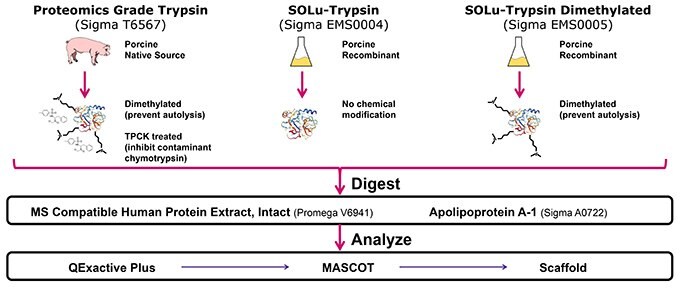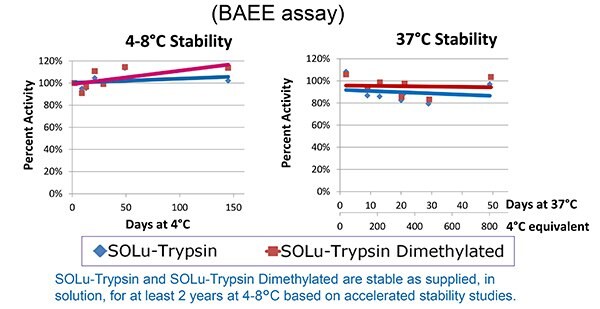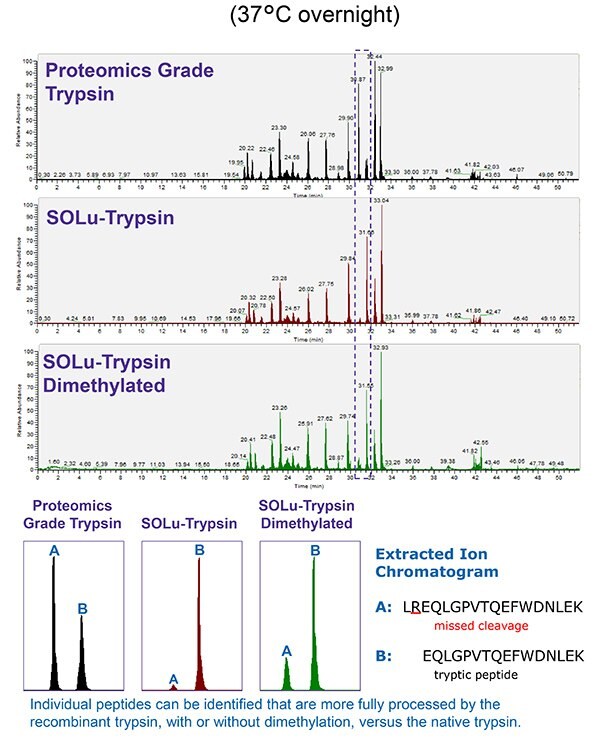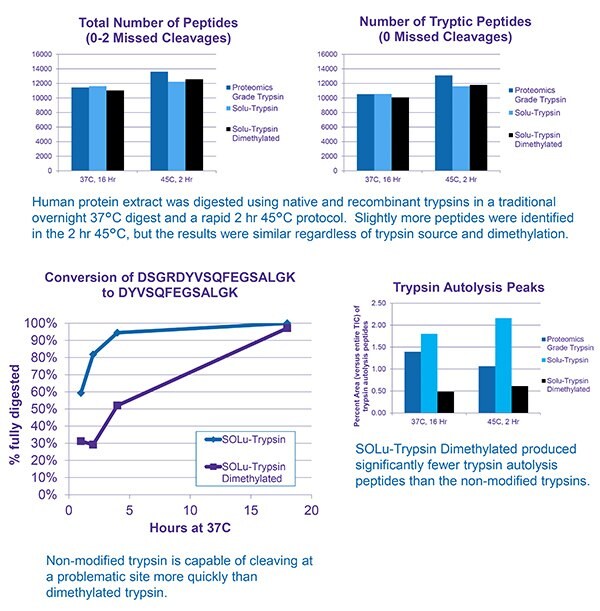HomeProtein Mass SpectrometryEvaluation of Recombinant, Chemically Treated Trypsin in Proteomics and Protein Characterization Assays
Evaluation of Recombinant, Chemically Treated Trypsin in Proteomics and Protein Characterization Assays
Judy Boland, Nicolas Caffarelli, Gordon Nicol, Amber Henry, Jeffrey L. Turner, Kevin Ray
Overview
- We compared recombinant trypsin to native-source in various MS workflows.
- Native source trypsin is dimethylated to prevent autolysis and TPCK treated to inhibit chymotrypsin.
- Native and recombinant trypsins gave similar amounts of proteins and peptides identified in a complex mixture.
- TIC of a single-protein digest revealed more complete peptide processing by recombinant trypsins relative to native trypsin.
- Trypsin dimethylation leads to slower processing but with fewer autolytic peptides present.
Introduction

Figure 1.Porcine Pancreatic Trypsin
Proteomics grade trypsin is:
- Dimethylated (prevent autolysis)
- TPCK treated (inhibit chymotrypsin)

Figure 2.Dimethylated
Are there better options?

Figure 3.Materials and Methods
Results

Figure 4.SOLu-Trypsin Stability
Average Number of Proteins Identified |
|---|
Human protein extract was digested using native and recombinant trypsins in a traditional overnight 37 °C digest and a rapid 2 hr
45 °C protocol. In all cases, similar numbers of proteins were identified.

Figure 5.Apolipoprotein A-1 Digest

Figure 6.To Dimethylate or Not Dimethylate
Conclusions
- Recombinant trypsin digests yielded comparable amounts of peptides and proteins identified across all conditions tested versus standard sequencing-grade trypsin.
- Dimethylation was shown to reduce the presence of autolytic fragments, whereas unmodified enzyme yielded faster processing of certain cut sites.
- SOLu-Trypsin is solution-stable for >49 days at 37 °C and >800 days at 4 °C based on accelerated stability studies.
- Recombinant solution-stable trypsin can be used in lieu of native trypsin with no changes to work flow.
Materials
Loading
Connectez-vous pour continuer
Pour continuer à lire, veuillez vous connecter à votre compte ou en créer un.
Vous n'avez pas de compte ?